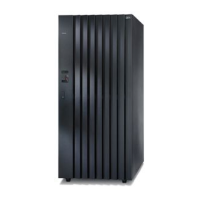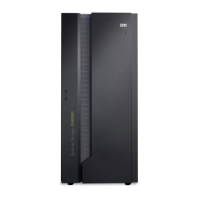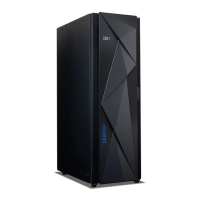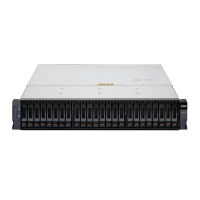link-level facility
The ESCON hardware and logical
functions of a control unit or channel
subsystem that allow communication over
an ESCON write interface and an ESCON
read interface.
local area network (LAN)
A computer network located on a user’s
premises within a limited geographic
area.
local e-mail
An e-mail configuration option for storage
servers that are connected to a
host-system network that does not have a
domain name system (DNS) server.
logical address
On an ESCON interface, the portion of a
source or destination address in a frame
used to select a specific
channel-subsystem or control-unit image.
logical block address (LBA)
The address assigned by the DS8000 to a
sector of a disk.
logical control unit (LCU)
See control-unit image.
logical data unit
A unit of storage that is accessible on a
given device.
logical device
The facilities of a storage server (such as
the DS8000 series) associated with the
processing of I/O operations directed to a
single host-accessible emulated I/O
device. The associated storage is referred
to as a logical volume. The logical device
is mapped to one or more
host-addressable units, such as a device
on a System z I/O interface or a logical
unit on a SCSI I/O interface, such that the
host initiating I/O operations to the
I/O-addressable unit interacts with the
storage on the associated logical device.
logical partition (LPAR)
For System z, a set of functions that create
the programming environment in which
more than one logical partition (LPAR) is
established on a processor. An LPAR is
conceptually similar to a virtual machine
environment except that the LPAR is a
function of the processor. Also, the LPAR
does not depend on an operating system
to create the virtual machine environment.
(DS8000 series only)
logical path
1) The relationship between a channel
image and a control-unit image that
designates the physical path to be used
for device-level communications between
these images. The logical path is
established as part of the channel and
control-unit initialization procedures by
the exchange of link-level frames.
2) With the Remote Mirror and Copy
feature, the relationship between a source
logical subsystem (LSS) and a target LSS
that is created over a physical path
through the interconnection fabric that is
used for Remote Mirror and Copy
functions. An LSS is a primary control
unit, which performs the functions of a
channel image.
logical subsystem (LSS)
A topological construct that consists of a
group of up to 256 logical devices. A
DS8000 storage unit can have (if CDK
only) up to 32 CKD-formatted logical
subsystems (8192 CKD logical devices) or
(if FBA only) up to 32 fixed-block logical
subsystems (8192 fixed-block logical
devices). If mixed CKD and FBA, a
DS8000 can have up to 16 CKD-formatted
logical subsystems (4096 CKD logical
devices) and up to 16 fixed-block logical
subsystems (4096 fixed-block logical
devices). The logical subsystem facilitates
configuration of the DS8000 and might
have other implications relative to the
operation of certain functions. There is a
one-to-one mapping between a CKD
logical subsystem and a System z
control-unit image.
For System z hosts, a logical subsystem
represents a logical control unit (LCU).
Each control-unit image is associated with
only one logical subsystem. See also
control-unit image.
logical unit
In open systems, a logical disk drive.
logical unit number (LUN)
In the SCSI protocol, a unique number
that is used on a SCSI bus to enable it to
differentiate between separate devices,
each of which is a logical unit.
200 DS8000 User’s Guide
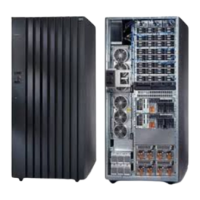
